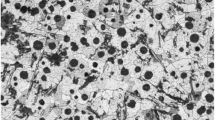Abstract
The results of experimental studies in selecting optimum characteristics for diamond drills and optimum treatment procedures for drilling holes 1 – 70 mm in diameter in hard brittle nonmetallic materials such as quartz, ceramics, glass, and glass ceramics are considered. To obtain experimental-mathematical models, a randomized experimental design was used at the screening stage, i.e., a half-replica of the full factorial experiment 23, and an orthogonal compositional design of the second order of type 35 was used at the main stage. The diamond drilling process was optimized using simplex methods. The correlation of the estimated values with experimental data showed the adequacy of the results obtained.
Similar content being viewed by others
REFERENCES
A. V. Balykov, “Modeling of diamond drilling of nonmetallic materials,” Steklo Keram., No. 3, 13–16 (2003).
I. G. Zedginidze, Experimental Design for Studying Multicomponent Systems [in Russian], Nauka, Moscow (1976).
Author information
Authors and Affiliations
Rights and permissions
About this article
Cite this article
Balykov, A.V. Optimization of Diamond Drilling Using an Extreme Experimental Design. Glass and Ceramics 60, 213–216 (2003). https://doi.org/10.1023/A:1027383007954
Issue Date:
DOI: https://doi.org/10.1023/A:1027383007954



